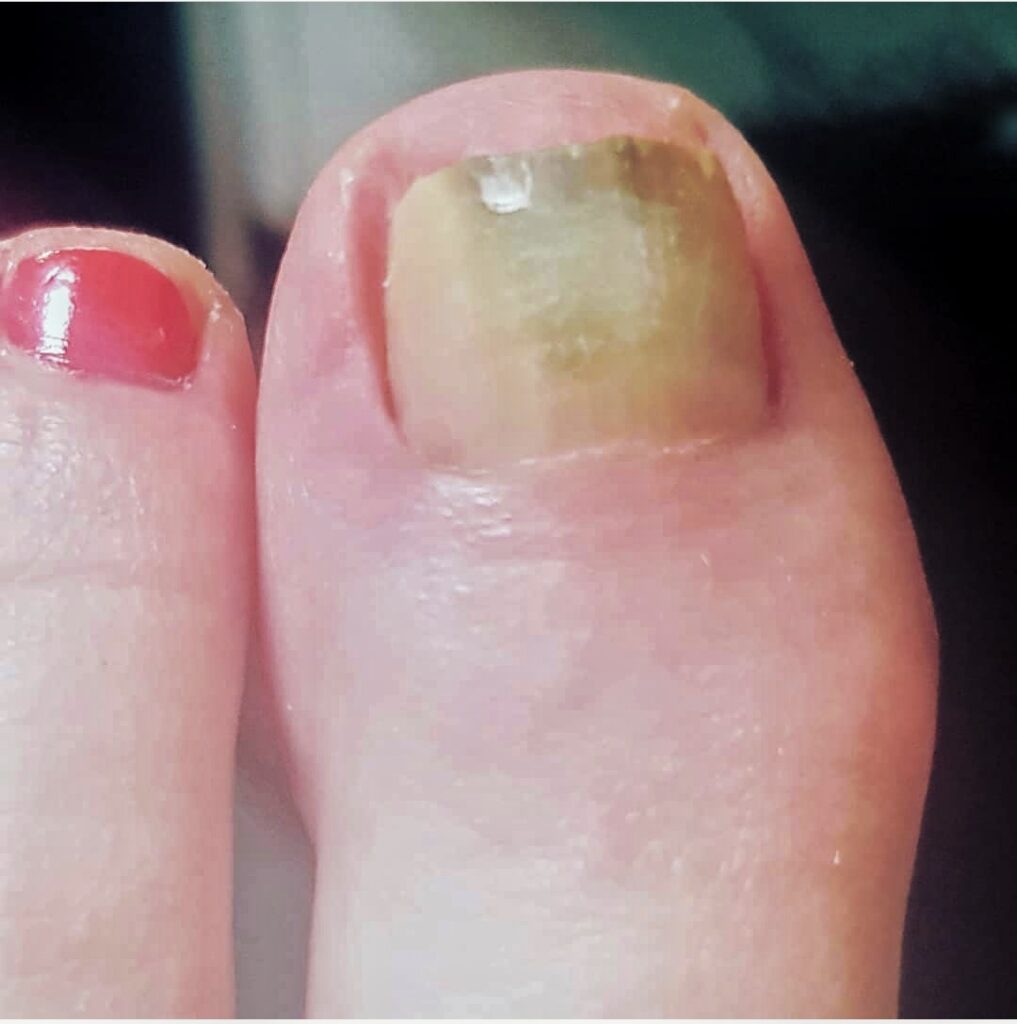Learn more about Green Nail Syndrome
Green nail syndrome (GNS) is an infection of the nails that leads to a greenish discoloration of nails, also known as chloronychia. It is usually due to a bacterial nail infection (pseudomonas) as well as infection due to a yeast called candida. Pseudomonas infection can often affect nails that have been damaged by a common fungal infection or trauma.
The green discoloration varies from blue-green to dark green to bluish-grey. Since the discoloration is underneath the nail, it will not disappear with washing or scrubbing. The condition is usually confined to one or two nails. And it can involve fingernails or toenails. The nail is usually not painful; however the skin around the nail, including the cuticle, may be swollen, tender, or red.
Risk Factors
The two risk factors include
- when a nail becomes abnormally lifted off the nail bed; this is also known as onycholysis. When the nail is detached from the nail bed, the waterproof seal formed by the skin on the nail is lost. This creates a subungual space that collects dirt and debris and may allow an entry point for P. aeruginosa. Trauma to the area under the nail contributes to onycholysis. People at risk for separated nails are gardeners, janitors, and plumbers.
- when a nail is expose to a damp environment. Nails repeatedly immersed in water are then susceptible. Housewives, dishwashers, cooks, and health care personnel may be more likely to have GNS. It should also be noted that wearing tight-fitting shoes for a prolonged time, especially while exercising, is associated with GNS. This has been noted in military recruits and soccer players. Minor risk factors for GNS include nail psoriasis and fungal nail infections.
Green nail syndrome responds well to treatment. Therapy consists of cutting the detached portion of the nail, keeping nails dry, as well as avoiding trauma to the area. Occasionally, the nail may need to be removed, if more conservative treatment fails.
Are you suffering from this condition? At The Chelsea Clinic, we can help. One of our podiatrist can assist and then recommend what treatments are best to get you back on track. Podiatrist South Kensington
Schedule an appointment here or you may call us at +44 (0) 207 101 4000.
We hope you have a feetastic day!
-The Chelsea Clinic and Team
Check our latest blog about Athlete’s Foot here https://www.thechelseaclinic.uk/athletes-foot/
Related Pages:
Check our article about Ingrown Toenail Treatment here https://www.thechelseaclinic.uk/ingrown-toenail/
Read our blog about Fungal Nails here https://www.thechelseaclinic.uk/fungal-nails/
Learn more about our Nail Surgery Procedure here https://www.thechelseaclinic.uk/nail-surgery/




